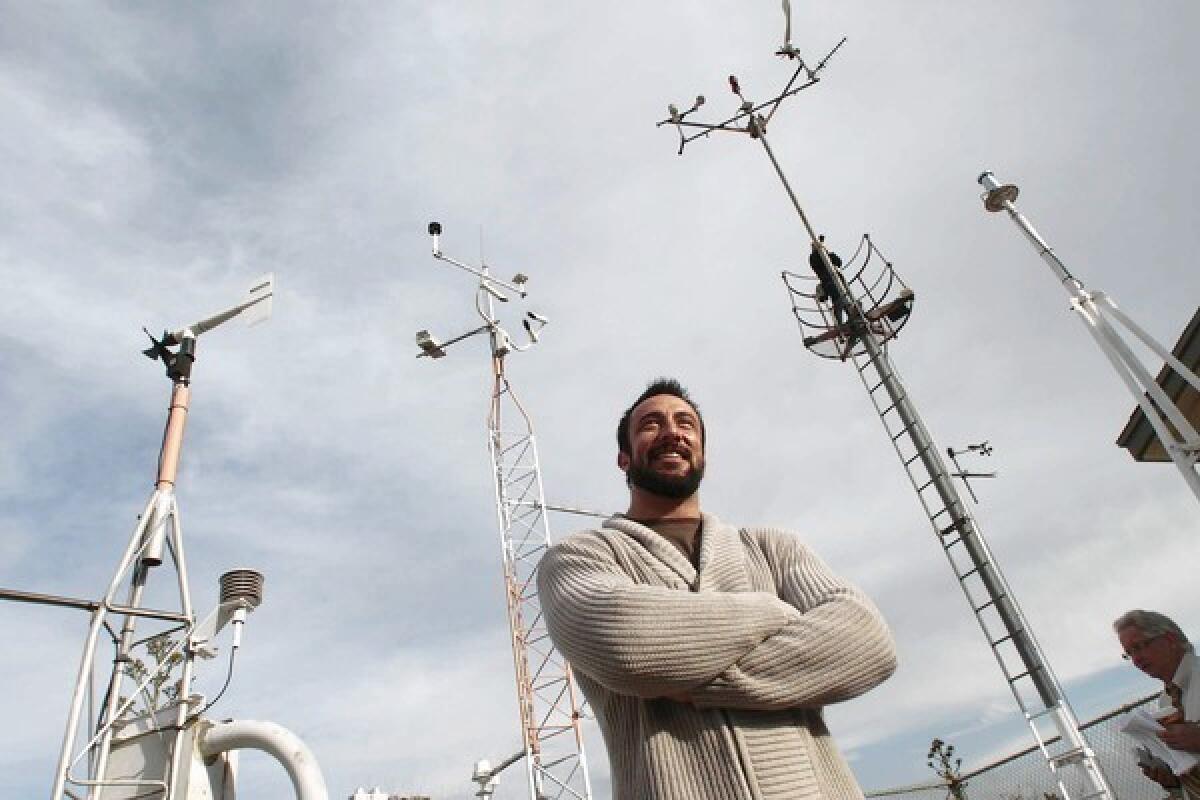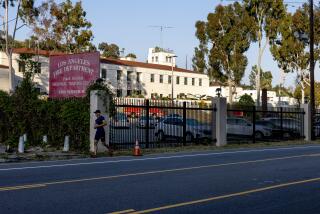Pierce College weather station gets major upgrade

- Share via
Over the last 63 years, they’ve become experts on the weather in the western San Fernando Valley.
So when operators of Pierce College’s campus weather station suggested that those attending the unveiling of a major station upgrade bring umbrellas, people paid attention.
It turned out to be partly sunny and dry during Thursday morning’s ceremonies in Woodland Hills; the first light sprinkles didn’t come for another three hours. Nonetheless, meteorology professors had canvas canopies on hand just in case the skies opened up before the speechmaking was over.
The college used an $85,000 federal grant issued through the National Oceanographic and Atmospheric Administration to pay for the old station’s makeover, which is expected to help climatologists more closely plot climate change in future years.
The grant paid for a net radiometer to measure both solar and terrestrial radiation levels, a fire weather sensor, an evapotranspiration moisture sensor, soil sensors that gauge temperature and moisture content, a sonic wind sensor that requires no moving parts, a sky camera and a visibility gauge that is sensitive enough to separate drizzle from sprinkles.
Former Pierce College meteorology student Steve Woodruff, weather office manager at Van Nuys Airport and a volunteer at the campus station since 1998, installed the new equipment.
“I like to put as much as I can in a station to provide a plethora of data,” Woodruff told a crowd of more than 100 students and college officials. He said it’s impossible to know what sort of data will be important in the future to the study of global warming.
National Weather Service meteorologist Mark Jackson — who heads the Los Angeles weather forecast office in Oxnard and uses the college’s data, said the station’s continuity since July 1, 1949, adds to its importance.
College weather station manager Jason Finley, an assistant professor of geography and meteorology, praised Rep. Brad Sherman (D-Sherman Oaks) for helping to secure the NOAA funding. He presented the congressman with the rain gauge funnel originally installed in 1949 by station founder Lee Haines, a botany instructor.
Finley noted that the weather station has tallied some extreme temperatures over the years — Los Angeles’ lowest temperature (18 degrees) and Los Angeles County’s hottest (119 degrees). Professor William Russell, who headed the station from 1985 to last April, said he rushed from home to the campus Saturday, July 22, 2006, to verify that scorching temperature reading with a mechanical recording device after spying the 119-degree reading on the station’s website.
“This station is the Rolls Royce of Southern California weather stations,” said Bill Patzert, a veteran climatologist at the Jet Propulsion Laboratory in La Cañada Flintridge. Since the station is located away from buildings and trees, its readings are accurate, he said.
“The downtown Los Angeles weather station at USC is in an area shaded by eucalyptus trees,” Patzert said. “I asked them to cut down the trees, but USC didn’t want to.”
More to Read
Sign up for Essential California
The most important California stories and recommendations in your inbox every morning.
You may occasionally receive promotional content from the Los Angeles Times.












